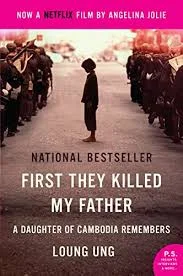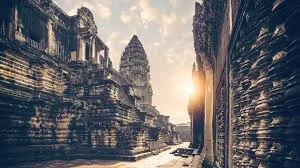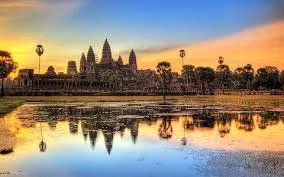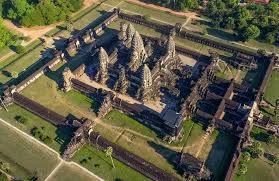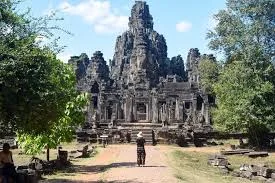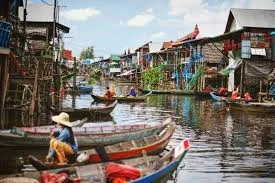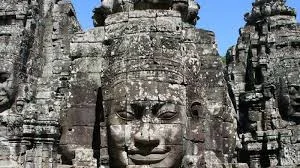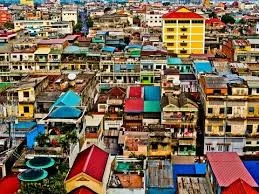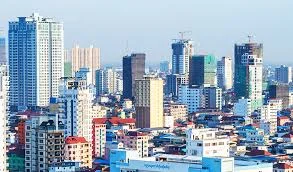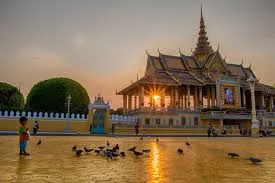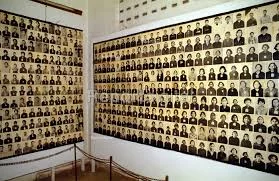Cambodia. A Country Battered, Bruised And Broken, Then Washed Clean With A Billion Tears.
In hindsight, perhaps I should not have read, “ First They Killed My Father,” Loung Ung's harrowing and deeply disturbing autobiography of her time during Pol Pot’s misguided revolution (1975 – 1979) which condemned over two million of it’s own citizens to an appalling genocide.
During my travels throughout this small country I found it difficult not to stare at anyone aged forty and above, knowing full well they had somehow survived the horrors of the Khmer Rouge’s purge.
I begin my journey in the altogether charming city of Siem Riep, a sleepy ' little town' that, even with over two million visitors a year, still manages to operate in the way it has always done, before the ‘ tourists ‘arrived in their droves.
From around the world they come with the sole intention of seeing one of the greatest marvels from the ancient world, Angkor Wat.
This spectacular structure is the largest religious monument in the world, with the site measuring a staggering 162.6 hectares (1,626,000 m2; 402 acres) It was originally constructed as a Hindu temple to god Vishnu for the Khmer Empire before gradually transforming into a Buddhist temple towards the end of the 12th century.
Then, due to a number of factors and, after three centuries of construction the entire complex was simply abandoned allowing the jungle to engulf it over a period of five hundred years.
In the mid-19th century the temple was ‘re-discovered’ by the French naturalist and explorer Henri Mouhot, who popularised the site in the West through the publication of a series of travel notes, in which he wrote:
"One of these temples—a rival to that of Solomon, and erected by some ancient Michelangelo it deserves to take its place beside our most beautiful buildings. It is grander than anything left to us by Greece or Rome and presents a sad contrast to the state of barbarism in which the nation is now plunged."
It is hard to describe in words the sheer size of the structure and, as I stare in wonder at this giant edifice, I try and envision just how many thousands of masons, carpenters, engineers, architects and labourers were needed to construct something so huge.
The massive outer walls stretch nearly two kilometers around the site and rise to a height of 6.5 m. The entire complex is surrounded by a 30 m apron of open ground and a gigantic moat 190 m wide, dug entirely by hand to a depth of 4 m.
One of the magnificent features that have made the temple so famous are the extensive bas- relief friezes which have been labeled, “the greatest known linear arrangement of stone carving”
The best time to visit Angkor Wat is in the low season (May – July) when the crowds are smaller and the heat not so oppressive.
From Siem Riep I meander west across the impossibly flat countryside, which, at this time of year, during the Monsoon is a vibrant, verdant green with rice paddies stretching as far as the eye can see. A three hour drive brings me to Cambodia’s second largest city, Battanbang, an industrial centre that, in its own way is rather captivating. Here the French colonialists built splendid villas and merchant houses that, even though many are now badly in need of repair, still exude a sense of 19th century grandeur.
Canal in Siem Reap
My first morning, sitting at a roadside patisserie, I see hordes of fresh- faced twenty something’s wandering the streets, all wearing T-shirts emblazoned with the logos of the various NGO’s that they have come to volunteer for.
This city is NGO central with all seemingly having adopted names along the lines of something or other ‘without borders.’ There are literally hundreds of these organisations that sponsor and run, schools, orphanages and hospitals around the country.
The current, extremely corrupt government is apparently delighted to have them here as it means they don’t have to plow funds into the much-needed sectors of health, education and infrastructure as technically, the ‘outsiders ‘ are doing it for them!
While I was there I witnessed the power of the monsoonal rains when each afternoon the heavens opened and dumped billions of liters of water on the city, turning the roads into rivers, much to the delight of the small children who dash about naked reveling in the experience.
On of the giant carvings around Ankor Watt
The small city is peppered with many fine restaurants and boutique hotels catering to visiting heads of NGO’s and foreign dignitaries, here to see that their donor’s money is well spent.
Getting around in this city and indeed all the cities and towns around the country is made easy with the proliferation of the ever-reliable ‘tuk-tuks’ where the fare never really exceeds $2. In fact this is a relatively cheap country to travel in as most main meals in restaurants rarely exceed $7 and the local Cambodian beer cost just $1.
So, it was time to head south to a city I have wanted to visit for years, Phnom Penh. The five-hour drive from Battanbang was easy and relatively traffic free until we reached the outskirts of the city where huge garment factories sit cheek by competitive jowl.
It takes about an hour to reach the city centre until the industrial hustle and bustle is finally shaken off and we are into the heart of classical French architecture. Here is a city that is reinventing itself, embracing the west (and east) with undisguised zeal. The low- rise buildings are quickly being dwarfed by high - rise buildings going up on any available land space.
The Chinese, Japanese and Koreans are pouring untold millions into the construction of scores of apartment and office complexes, though who will occupy them? The Chinese, Japanese and Koreans I guess. I fell in love with Phnom Penh in a flash, with its bustling streets, markets and more restaurants than one could eat at in a couple of years!
Our ‘boutique’ hotel lived up to its reputation as a fully restored French mansion complete with a lush tropical garden and a shaded pool in which to escape the fierce midday heat.
I think no visit to Phnom Penh is complete without a visit to the s-21 museum, the ‘secret’ prison run by the Khmer Rouge during the revolution. Here 20,000 men, women and children were ruthlessly tortured and killed in the name of the brave new world envisioned by the dictator Pol Pot.
The site pulls no punches in telling the numerous stories of the horrors of the time via its graphic photographs, paintings and an excellent audio tour. Beware, this is not a place for the faint hearted but in many ways it should be seen, lest we forget.
The stay was short; the weather sublime, the Mekong River mighty, the food outstanding and the experience was one to savor. My thanks to Dean Owen one of my favourite travel writers for his suggestion to visit the Elephant Bar at the splendid Raffles Hotel…it didn’t disappoint!
Cambodia, you captured my heart and I will make every effort to come and see you again soon.


